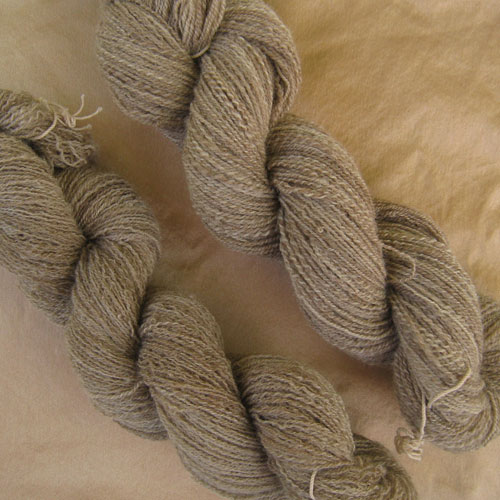Remember my fabric samples from Sharon Alderman’s class in March? My vision was to have flashes of color running along the warp. For the sake of expediency, I samples with the colors I wanted running the full length of the warp instead of creating the yarn of my vision. The intention was to dye and spin my own yarn with just blips of color popping in and out of the length.
 This past weekend, I got down to the business of dyeing the fiber. For the most part, I used Ashford Wool Dyes from Amazing Yarns. Andrea had just finished a dye day with the study group. I looked at some of her results and realized that they were exactly the colors, or at least in the right range, that I had selected in my samples. She sent me off with the leftover dyes and another small jar of hot pink, and off I went.
This past weekend, I got down to the business of dyeing the fiber. For the most part, I used Ashford Wool Dyes from Amazing Yarns. Andrea had just finished a dye day with the study group. I looked at some of her results and realized that they were exactly the colors, or at least in the right range, that I had selected in my samples. She sent me off with the leftover dyes and another small jar of hot pink, and off I went.
On the right shows the dyed merino/silk next to the original color cards I wrapped using Zephyr. Pretty close, wouldn’t you say? I am replacing the turquoise with the teal and the green.
 For the red, I am using the red merino/silk from The Artful Ewe (far left in the picture) Â that I’ve been spinning. Good thing I haven’t finished spinning it because it’s almost an exact match.
For the red, I am using the red merino/silk from The Artful Ewe (far left in the picture) Â that I’ve been spinning. Good thing I haven’t finished spinning it because it’s almost an exact match.
I had settled on using the ebony warp and indigo weft. So the base of my accent yarn needs to be black. I dug in my dye stash and found my Mother MacKenzie’s Miracle Dye kit that I purchased years ago (so old that she sold them in little zip lock bags instead of the pretty tins). I used the Prime Black for the base.
 I started spinning last night. (Please excuse the fuzzy bobbin. I had to pick either the color card or the bobbin for my focal point.) I’m very pleased with the results. The color stretches are a bit longer than my vision, but that’s the way it is, since the staple length is 2-4″ for the merino/silk. I can’t get it much shorter and still spin worsted.
I started spinning last night. (Please excuse the fuzzy bobbin. I had to pick either the color card or the bobbin for my focal point.) I’m very pleased with the results. The color stretches are a bit longer than my vision, but that’s the way it is, since the staple length is 2-4″ for the merino/silk. I can’t get it much shorter and still spin worsted.
I chose to leave the violet out of my spun yarn. The violet disappeared into my fabric sample. In fact, it’s hard to pick it out of the sample card too. I also left out the hot pink. It wasn’t necessary.
In order to not dilute the blips of color even more (from the weft), I will leave the yarn as a single. I’m making extra sure that I have good joins that will hold up to warping. Of course, this is for the full length too, since I don’t plan on finishing the yarn before putting it on the loom. I want the yarn to bloom along with the rest of the fabric.


